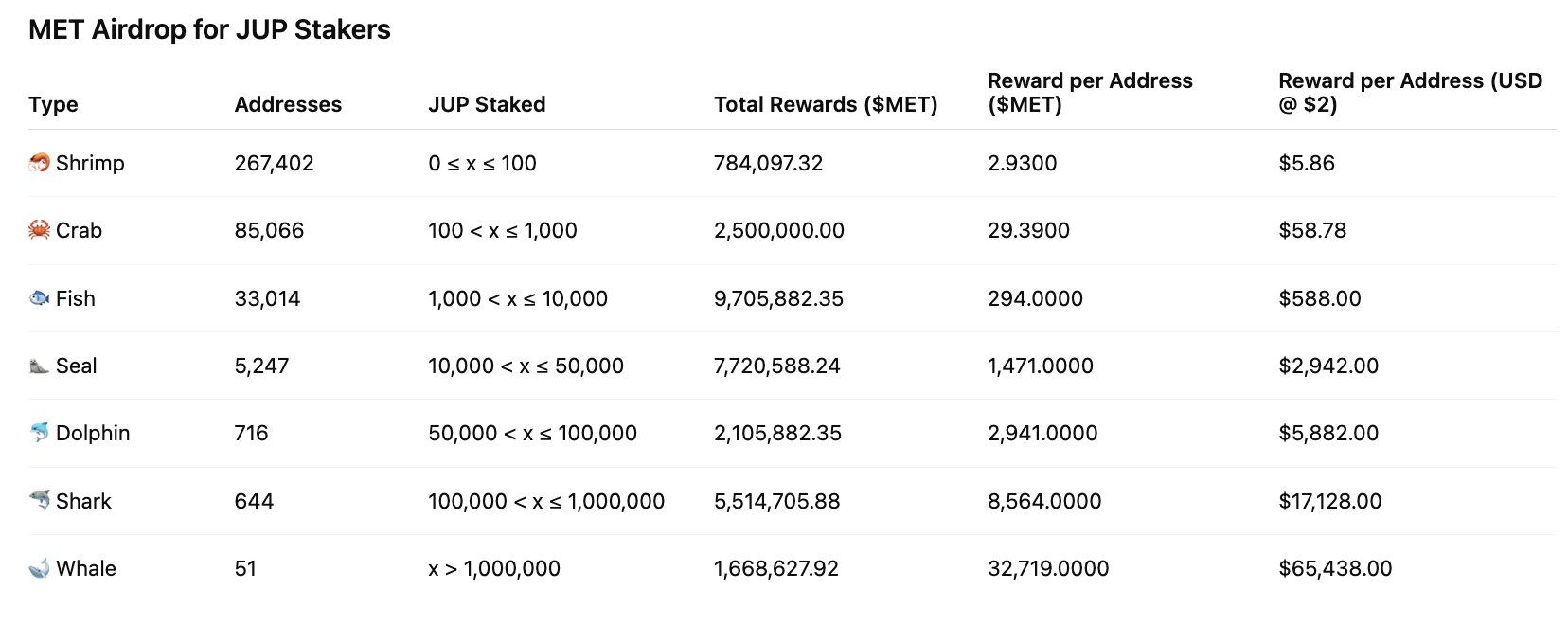Meteora is stirring the Solana group with a controversial proposal: to allocate 3% of the TGE fund to JUP stakers, not in common tokens however in Liquidity Place NFTs.
This novel method guarantees to bootstrap deep liquidity for MET from day one, but it raises questions on equity and focus danger. Will this be a savvy transfer to bridge the 2 communities, or will it ignite a protracted debate?
3% Allocation for JUP Staker
As BeInCrypto reported, Meteora is getting ready for a TGE in October. The platform floated one of many group’s most notable proposals forward of MET’s TGE.
Sponsored
Sponsored
Underneath the plan, the challenge intends to allocate 3% of the TGE fund to Jupiter’s JUP stakers as Liquidity Place NFTs. Particularly, Meteora would use the three% to seed MET liquidity in a Single-Sided DAMM V2 pool, then allocate positions to Jupiter stakers primarily based on time-weighted staking, quantity, and voting exercise.
The target is to create MET/USDC liquidity at itemizing with out instantly including extra MET to the circulating provide. The proposal additionally emphasizes that “no extra tokens circulating will probably be added resulting from this proposal.” This can be a “liquidity-first” method fairly than a direct token payout.
Meteora’s Co-Lead, Soju, revealed a public calculation to visualise scale. In keeping with Soju, roughly 600 million JUP are at the moment staked. A 3% allocation would equal 30 million MET tokens. That works out to about 0.05 MET per staked JUP.
“I feel its cheap,” Soju shared.
A person on X ran some serviette math and produced the same determine of ~0.05035 MET/JUP relying on FDV assumptions. The per-JUP reward is small however aggregated at scale, so it could function a significant incentive to transform customers into MET liquidity suppliers.

Professionals & Cons
Meteora’s proposal has clear upsides in comparison with different tasks that reward customers by way of airdrops. It explicitly acknowledges Jupiter’s function within the Solana ecosystem, helps bootstrap MET/USDC liquidity at TGE, and reduces the instant promote strain as a result of the preliminary reward is a liquidity place fairly than freely tradable tokens. With cautious engineering (time-weighted distribution, vesting connected to NFTs, withdrawal restrictions), this may very well be an efficient bridge between the 2 communities.
Nonetheless, important dangers stay. The group has raised equity issues: why should JUP stakers receive a large share? May an “LP Military” or giant wallets seize a disproportionate share of the rewards? What is going to the circulating provide be at TGE instantly? Earlier allocation drafts talked about up to 25% reserved for liquidity/TGE reserve, so the entire preliminary circulating provide stays a cloth transparency query.
“Tough to debate on ‘equity’ when JUP gave up 5% for Meteora (by way of mercurial stakeholders). LP military deserves extra -> LP Military will seize a major chunk of all future emissions (ongoing LM rewards), and nonetheless possess 20% (8% + 5% + 2% + 3% + 2%) of complete provide at TGE,” Soju noted.
From previous airdrop occasions, Meteora’s staff have to be clear about tokenomics, clearly disclose the LP NFT redeem/vest mechanics, set per-address caps, and contemplate extra incentives for MET holders. If executed poorly, concentrated distribution and subsequent promote strain might erode TGE’s worth.

